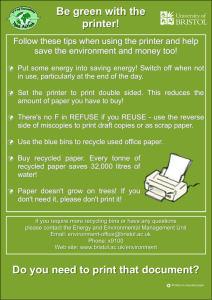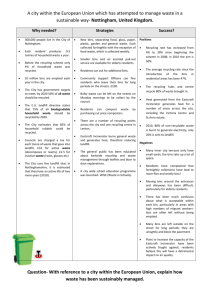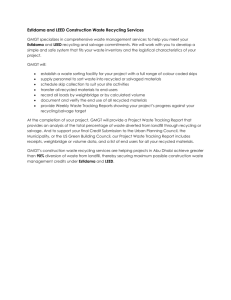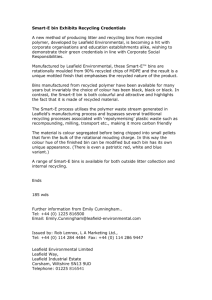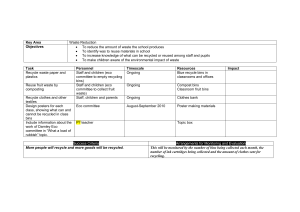Top five environmental impacts (MS Word , 173kb)
advertisement
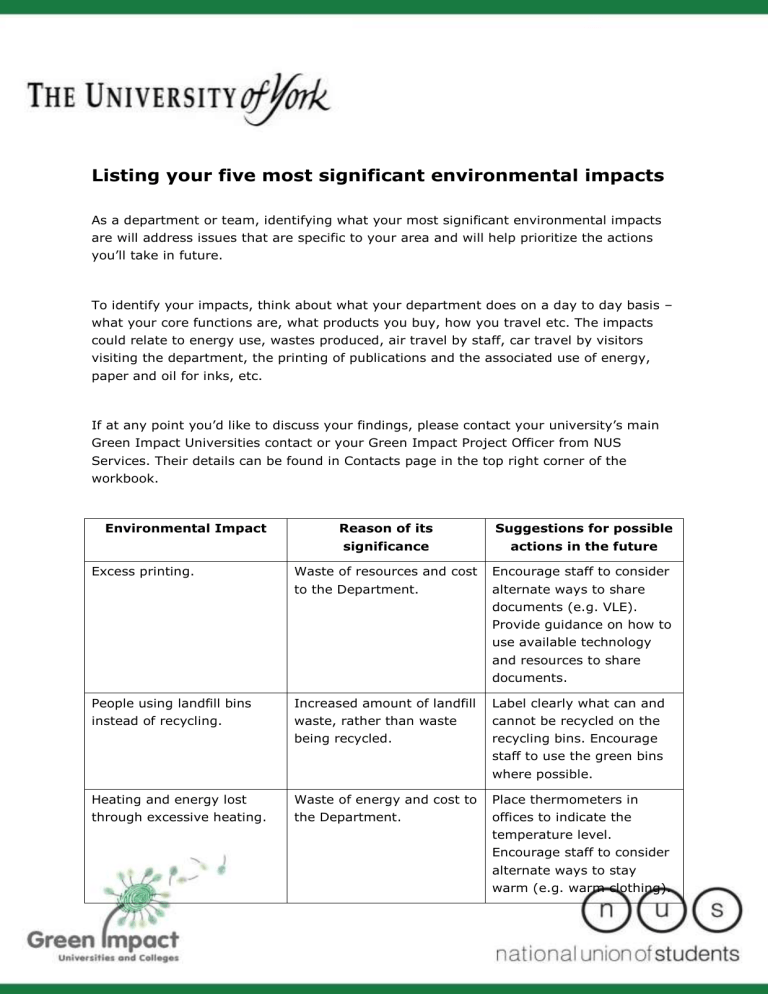
Listing your five most significant environmental impacts As a department or team, identifying what your most significant environmental impacts are will address issues that are specific to your area and will help prioritize the actions you’ll take in future. To identify your impacts, think about what your department does on a day to day basis – what your core functions are, what products you buy, how you travel etc. The impacts could relate to energy use, wastes produced, air travel by staff, car travel by visitors visiting the department, the printing of publications and the associated use of energy, paper and oil for inks, etc. If at any point you’d like to discuss your findings, please contact your university’s main Green Impact Universities contact or your Green Impact Project Officer from NUS Services. Their details can be found in Contacts page in the top right corner of the workbook. Environmental Impact Excess printing. Reason of its Suggestions for possible significance actions in the future Waste of resources and cost Encourage staff to consider to the Department. alternate ways to share documents (e.g. VLE). Provide guidance on how to use available technology and resources to share documents. People using landfill bins Increased amount of landfill Label clearly what can and instead of recycling. waste, rather than waste cannot be recycled on the being recycled. recycling bins. Encourage staff to use the green bins where possible. Heating and energy lost Waste of energy and cost to Place thermometers in through excessive heating. the Department. offices to indicate the temperature level. Encourage staff to consider alternate ways to stay warm (e.g. warm clothing). Loss of energy through Waste of energy and cost to Remind staff that they have electrical devices being left the Department. responsibility to turn off on. equipment when not in use. Share information on Departmental costs with staff. Reuse of stationery rather Unnecessary cost to the Ask Joan and Avril (who than reordering. Department and waste of source stationery), to resources. encourage staff to check the stationery cupboard before ordering more supplies. Also try to source recycled products where possible.


